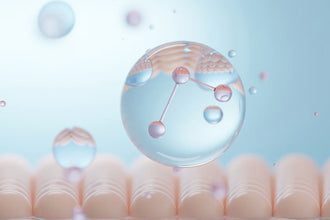
Best Practices for Hygiene and Care After a Tummy Tuck
A tummy tuck, otherwise known as abdominoplasty, is a cosmetic surgical procedure carried out to give an individual a thin waist and a firm abdomen. The results can be remarkable, but the healing period must be observed with great care, particularly in terms of preventing infections.
Hygiene and sanitation are important to promote healing and avoid post-operative complications. This article will discuss understanding infection risk, preventing infections and implementing lifestyle adjustments to maximize the efficiency of the healing process.
Understanding the Risk of Infections After a Tummy Tuck
Infections are a routine phenomenon after every surgery, and a tummy tuck is no exception to this. In a tummy tuck, the cosmetic surgeon operates on the upper abdominal area by excising skin and fat while re-firming the abdominal walls. This requires an incision in a susceptible area for bacteria. Infections can be severe and extend the healing procedure, causing more scarring than usual. In extreme cases, further surgical interventions are needed.
Encountering an infection is something that can occur depending on several factors:
- Type of incision and sutures: The position, inclination, size of sutures or staples, and surgeon's approach can determine the chances of infection.
- Patient’s overall health: Insulin-dependent diabetes, obesity, and autoimmune diseases can weaken the immune system.
- Post-surgical care activities: it is essential to look after the wounds, maintain hygiene and be careful with general movement.
Preventing Infections with Proper Hygiene

Hygiene in the form of hand washing is the most common and important step to be taken to prevent tummy tuck infections. Minimal hygiene levels to adhere to:
-
Hands must be properly cleaned: Hands are the primary carriers of bacteria and other pathogens; therefore, proper hand washing practices must be followed before contact is made with the operative site or dressings. Consider making use of alcohol hand rubs when soap and water do not seem adequate. Any member of the family or caregiver assisting in wound management must also practice diligent hand washing.
-
Surgical Site Must be Kept Clean and Dry: The surgical site must be dry and clean from moisture to ensure that there is no entry of unwanted bacteria into the post-surgical site. Adherence to the following will help in sanitation:
- Cleaning routine: The area around the incision must be handled with a non-alcoholic antiseptic or soap. For the first three weeks after surgery, the incision site should not be scrubbed or rubbed because of the risk of tissue displacement.
- Avoid soaking: Do not bath, swim, or use the hot tub until the surgeon allows. Waterlogged environments might prompt bacterial proliferation and pose a high risk of infections.
| Hygiene Practice | Additional Details | Importance |
|---|---|---|
| Proper Hand Hygiene | Use an alcohol-based hand sanitizer when soap and water are not available | Reduces the risk of transferring bacteria to the surgical site, crucial for both patients and caregivers |
| Keeping the Surgical Site Clean and Dry | Use a mild antiseptic solution for cleaning, avoid scrubbing or rubbing the incision area | Prevents bacteria from entering the incision, reducing the risk of infection |
| Changing Dressings Regularly | Change dressings at least once or twice a day; use sterile gloves and materials | Helps maintain a sterile environment and protects the wound from contamination |
| Use of Antibiotics | Complete prescribed antibiotic course; follow guidelines for topical antibacterial ointments | Helps prevent infections and avoid antibiotic resistance |
| Recognizing Signs of Infection | Monitor for increased redness, swelling, pus, or foul-smelling discharge | Early detection of infection allows for timely medical intervention |
Changing Dressings Regularly
The dressings covering the incision assist in preventing contamination and maintaining a moisture-free environment. The dressing should therefore be changed according to what the surgical procedure suggests, for instance, one time daily, twice daily, or whenever appropriate.
The Role of Antibiotics and Antibacterial Ointments
Taking antibiotics after surgery can significantly lower the risk of infection. However, the surgeon's instructions must be adhered to without fail:
- Use topical ointments: In some cases, adding a very thin layer of antibacterial ointment may be advised by the surgeon. This can help reduce infections on the skin's surface. Always use as per the guidelines provided by your doctor.
- Monitor for side effects: Antibiotics can be of limited help due to possible adverse effects like stomach upset, nausea, and allergic reactions. If adverse reactions to the drugs occur, contact your doctor. Antibiotics can also interfere with helpful bacteria, therefore it's important to get probiotics into your diet, e.g. through a tummy tuck recovery supplement.
Recognizing Early Signs of Infection
Understanding the early signs of infection will prompt you to take the necessary steps so that serious issues do not develop. Look out for these:
- Redness or warmth around the incisional area
- Increased inflammation that does not subside
- Pus-filled or foul secretion from the incision wound area
- Abnormally high or low body temperatures
When observing any of the above symptoms, get in touch with your surgeon or healthcare provider without delay. This is crucial to slow the spread of infection and reverse it.
Importance of Following the Surgeon's Orders
After you undergo surgery, you will be given post-operative instructions to aid you in the prevention of infections. These instructions will apply to your individual case and cover various factors, including how complicated the procedure was, your medical history, and many other things. Failure to comply with the instructions will only raise the probability of infection and delay the healing process.
- Follow-ups: Do not miss follow-up visits that are booked for you after surgery. Appointments will help the surgeon assess the progress of the healing process, check for signs of infection, and alter the treatment if needed.
- Don’t try to self-medicate: Even if you think you know your health problems and what medications to use, consult with your physician first. Otherwise, there may be a negative impact on the surgery recovery process.
Nutrition and Lifestyle Changes
Refrain From Smoking and Consumption of Alcohol
Smoking and drinking alcohol can have adverse effects on recovery and increase the chances of infection. Smoking causes vasoconstriction: this delays the healing process. At the same time, alcohol can suppress the immune system and interact with the prescribed medications.
- Quit smoking: The ideal time frame for smoking cessation is 4 weeks or more before the date of surgery.
- Abstain from alcohol: Alcohol consumption should be avoided for the first few weeks after surgery, until the patient is advised by the surgeon.
Consume High-Protein Foods

Protein is extremely important in healing and rebuilding of damaged tissue. Protein can replace and restore layers of skin, muscle, and many other kinds of tissues. You can get protein from:
- Lean meats: Lean chicken and turkey, and some cuts of beef are rich in proteins and contain many necessary amino acids.
- Fish: Oily fish such as salmon and mackerel contain Omega-3 fatty acids, which help reduce inflammation and promote healing.
- Plant-based proteins: for vegans or vegetarians, legumes, tofu, and quinoa should be incorporated into the daily diet.
| Protein Source | Example Foods | Benefits for Recovery | Recommended Serving Size per Meal | Additional Nutrients Provided |
|---|---|---|---|---|
| Lean Meats | Chicken breast, turkey, lean beef | Rich in amino acids for tissue repair | 3-4 ounces (about the size of a deck of cards) | Iron, B vitamins (B12, B6) |
| Fish | Salmon, mackerel, sardines | Omega-3 fatty acids reduce inflammation | 3-4 ounces | Vitamin D, selenium |
| Plant-Based Proteins | Tofu, lentils, chickpeas, quinoa | Provides protein and fiber, good for vegetarians | ½ cup cooked (lentils/chickpeas); 1 cup cooked (quinoa) | Folate, magnesium, potassium |
| Dairy Alternatives | Greek yogurt, cottage cheese, soy milk | High in protein, helps maintain muscle mass | 1 cup (soy milk/yogurt); ½ cup (cottage cheese) | Calcium, probiotics (in yogurt), vitamin D |
| Protein Supplements | Whey protein, pea protein powder | Convenient for increasing protein intake | 20-30 grams per serving (adjust based on dietary needs) | Some supplements are fortified with vitamins and minerals |
Emotional Support and Mental Health During Recovery
The tummy tuck recovery process is not just physical. It is vital that an adequate recovery process includes healthy living and healthy relationships.
Establish a Support Network
Recovery is a process, and having family or friends who can help is transformational. They can help with everyday activities, provide moral support, and assist in watching out for any potential complications.
- Pencil in help: Organization of people to care for a patient should be done prior to the procedure.
- Make your requirements known: You should tell people in advance what help you will require from them. This may include food preparation, driving to a doctor’s office, or simply being there.
Use Stress Management Skills
Stress management and being positive are equally important during the recovery journey. Studies have shown that stress impairs healing ability.
- Mind and body relaxation techniques: Some techniques such as relaxation, meditation, and breathing exercises are effective in soothing the mind, reducing stress.
- Engage in light tasks: Partake in activities that are engaging but don’t require vigorous physical exertion, such as reading, listening to music, creative work, or hobbies.















